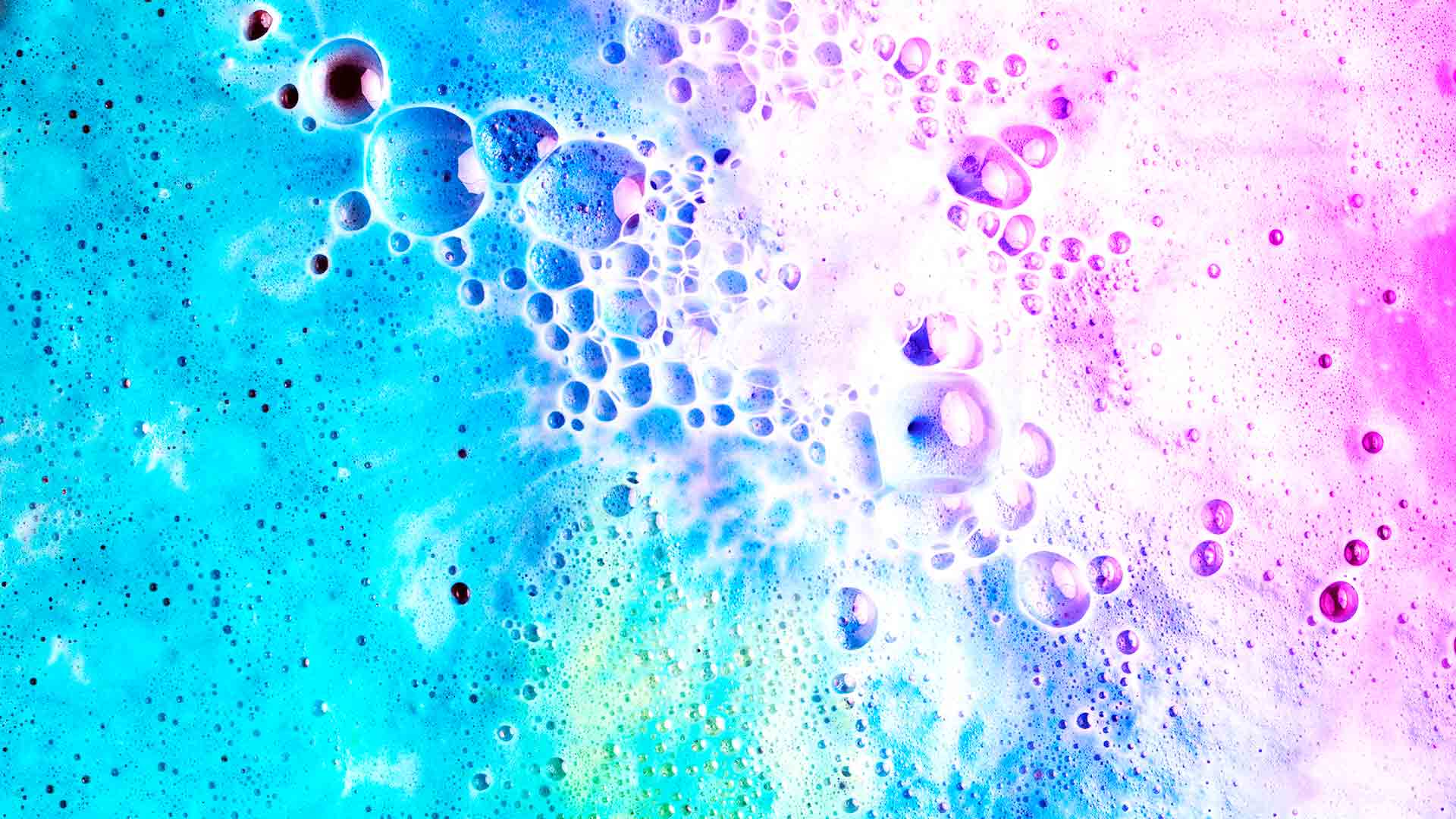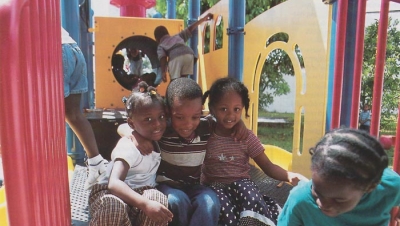A clean playground enables kids to grow, not germs
Playgrounds are a place where children can grow physically, intellectually, socially, and emotionally. Unfortunately, they are also a place where germs can grow—abundantly—if left unchecked.
Most agencies do a good job keeping their playgrounds litter-free, many quickly remove graffiti, but few clean and sanitize their playgrounds on any sort of a regular basis.
Just The Facts, Ma’am
As reported in the International Journal of Environmental Health Research in 2005, researchers from the University of Arizona and the U.S. Department of Agriculture found that 44 percent of playground surfaces tested positive for feces, urine, mucus, saliva, protein, sweat, and blood, making them the No. 1 “dirtiest” indoor or outdoor public surface. Contrast that with only 25 percent of public restroom surfaces testing positive.
The research team also found that contaminants on those surfaces will be transferred to the individuals touching them 86 percent of the time and the contaminants will be present hours later on personal belongings and the homes of those individuals 82 percent of the time. Couple these findings with the fact that children put their fingers in their mouths and noses far more often than adults and it is easy to see why young ones get sick much more frequently.
According to Charles Gerba, Ph.D., a professor of environmental microbiology at the University of Arizona (also known as “Dr. Germ”), “80 percent of infections are spread through hand contact.” Dr. Germ also tells us that outdoor playgrounds have, “gone to the birds. Birds use the playgrounds, particularly the monkey bars, as public restrooms.” Cats and squirrels often use play sand for the same purpose.
Clean Up Your Act
The frequency of playground cleaning, like playground inspections, is based on factors such as the age and number of users, type of equipment and surfacing and climate and other natural conditions. One large park district in the Midwest cleans and sanitizes its playgrounds every 30 days. One commercial playground cleaning company recommends a quarterly cleaning schedule at a minimum, with a cleaning frequency of up to twice a month depending on the factors above.
The process of playground cleaning can be summed up in three simple steps: spray, scrub and rinse. This includes all the inside surfaces, e.g., crawl tubes, tube slides, playhouses and the cracks and crevices between connecting joints, as well as the outside surface areas of the playground equipment and, as appropriate, the impact attenuating surfacing below it.
Cleaning and disinfecting agents are perhaps best applied by hand sprayers, brushed/scrubbed as needed with a medium-bristle scrub brush and rinsed with a garden hose. Depending on the product used, the needed contact time of the disinfectant on the play surface may be as much as 10 minutes, or more. Any graffiti and debris, such as gum, should also be removed as part of the cleaning process. An optional fourth step would be to polish high-contact plastic activities such as tubes, slides and bubble windows. Manufacturers claim playground polishes will condition and protect plastic surfaces, plus provide anti-static properties.
Some playground equipment and unitary surfacing manufacturers recommend using locally-available, mild-household or commercial detergents. As most outdoor playgrounds are in natural areas, strive to be environmentally conscious when choosing cleaning products. Try to pick products that are EPA-approved and “eco-friendly” to the children, as well as the environment. Antimicrobial, disinfecting agents should be used to address bacteria, viruses, mold, mildew, fungus and algae. All cleaners and disinfectants should be both non-allergenic and non-corrosive. Select cleaners for bubble windows or other clear panels that will not scratch or cloud them. Disinfectants, cleaners and polishes manufactured specifically for use on playground surfaces are available commercially, as are playground sanitizing systems.
The park district mentioned above sprays its playground equipment with a 5 percent chlorine bleach solution and allows it to set on the play equipment overnight and breakdown in the sun the following morning. The play equipment is then hand scrubbed and/or power washed as needed.
The American Chemistry Council defines a 5.25 percent chlorine bleach solution as “regular strength” and a 6 percent solution as “ultra strength” when used to whiten and disinfect laundry. Chlorine bleach is approved by the U.S. Environmental Protection Agency as a surface disinfectant and by the U.S. Department of Agriculture for use in safe food production. That being said, a manufacturer of a poured rubber surface warns that concentrated bleach, as well as disinfectants, can cause potential damage to its product. A commercial playground cleaning company claims that chlorine bleach, in high concentrations, can cause respiratory issues for the people applying it and that it can leave residue, odor and potentially damage clothing.
To determine the amount of time it will take to clean a playground, one commercial playground cleaning company estimates the needed time based on the size of the play structure(s), square footage of the surfacing, the amount of usage the playground receives and the frequency of the cleaning cycle. This company recommends allowing two to three hours for just the hand-detailed cleaning of a playground’s equipment.
Some professional cleaning companies and unitary surfacing manufacturers recommend against the use of pressure washers on playground equipment or the impact attenuating surfacing or at least recommend its use only on an as-needed basis. Even then, the recommendation is that the water pressure should not exceed 1,500 pounds per square inch and the spray nozzle should not be closer than 12 inches to the play surface.
The following tips for best cleaning results were provided by a manufacturer of poured rubber surfacing. This advice is helpful in cleaning any playground equipment or surface:
- Perform the cleaning during the cooler parts of the day (early morning or late afternoon), so that the cleaner will have time to react without evaporating.
- Surface must be damp prior to applying cleansing solution.
- Clean in small four-foot by four-foot sections, so that you can make sure you scrub the surface thoroughly and eliminate the possibility of dirty spots and/or streaking.
- Do not use any steaming or hot water machines for cleaning, as this may cause a rubber surface to delaminate.
And In The End
Many assume that rain, the sun’s UV rays and/or freezing temperatures will clean and entirely disinfect a playground. The study results above, conducted in four cities across the nation over a four-year period, would appear to negate those assumptions. Some professional cleaners actually claim the reverse—that exposure to environmental elements can spread germs to a new location on the play equipment.
Playground cleaning can be done in-house, if enough personnel are available, or can be contracted out to a commercial playground cleaner. To get an idea of what it might cost to contract for this service, one commercial playground cleaning company estimates a minimum charge of $200 per playground for its services. Of course, the price increases with the size of the playground and other variables.
Because it is impossible to keep a playground germ-free at all times, part of the approach to safeguarding the health of playground visitors could involve the education of playground users and supervisors (child care staff, elementary school teachers and aids, parents, grandparents, older siblings or any care provider who may bring a child to a playground). Language might be added to a playground rules sign prompting visitors to always wash their hands and use an alcohol-based hand wipe or a hand-sanitizing gel when playtime is over. The website “Germ Stop” reminds us that children should be taught the importance of not rubbing their eyes or nose while playing, so that the germs are not transferred from their hands to their mucous membranes. Germ Stop also advises us to treat any cuts or scrapes as soon as possible by washing them thoroughly with soap and water and to cover any existing open wounds with a band-aid or bandage before beginning play at a public place.
The expanding outbreak of Swine (H1N1) Flu and COVID-19 has raised justifiable fears in most parents. The lesser known “Superbug” (CA-MRSA, a type of staph infection that is resistant to common antibiotics), identified in America several years ago, can leave a child without the ability to see, speak or move and is currently spreading in Britain. With these major communicable diseases on the horizon, in addition to the common germs already on the scene, the time is “ripe” to start a playground cleaning program, if you don’t already have one in place.
Let’s keep our playgrounds a healthy place where kids can go to have “good, clean fun.”

















Add new comment